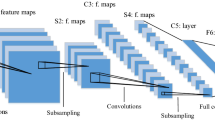Abstract
Super resolution reconstruction of video image is a research hotspot in the field of image processing, and it is widely used in video surveillance, image processing, criminal analysis and other fields. Super resolution image reconstruction can reconstruct a high resolution image from low resolution images, and this technology has become a research hotspot in the field of image processing. In recent years, deep learning has been developed rapidly in the field of multimedia processing, and image super resolution restoration technology based on deep learning has gradually become the mainstream technology. In view of the existing image super-resolution algorithm problems, such as more parameters, larger amount of calculation, longer training time, blurred image texture, we use the deep self-coding learning method to improve it. We analyze the advantages and disadvantages of the existing technology from the network type, network structure, training methods and so on, and sort out the development of the technology. The experimental results show that the improved network model achieves better super-resolution results, and the subjective visual effect and objective evaluation index are improved obviously, and the image sharpness and edge sharpness are improved obviously.












Similar content being viewed by others
References
Alsheikh MA, Niyato D, Lin S, Tan HP, Han Z (2016) Mobile big data analytics using deep learning and apache spark. IEEE Netw 30(3):22–29
Chen L, Ma Y, Liu P, Wei J, Jie W, He J (2015) A review of parallel computing for large-scale remote sensing image mosaicking. Clust Comput 18(2):517–529
Freedman G, Fattal R (2010) Image and video up-scaling from local self-examples. ACM Trans Graph 28(3):1–10
Harris J, Hofer M (2016) Planning for deep learning using TPACK-based learning activity types. In: Society for Information Technology & Teacher Education International Conference (pp. 2864–2871). Association for the Advancement of Computing in Education (AACE) https://www.learntechlib.org/p/172101/
Jiao J, Venkat K, Han Y, Weissman T (2015) Minimax estimation of functionals of discrete distributions. IEEE Trans Inf Theory 61(5):2835–2885
Jiao J, Han Y, Weissman T (2016) Minimax estimation of the L 1 distance. In Information Theory (ISIT), 2016 I.E. International Symposium on (pp. 750–754). IEEE https://www.learntechlib.org/p/172101/
Monteiro A, Teixeira C, Pinto JS (2017) Sky Computing: exploring the aggregated Cloud resources. Clust Comput 20(1):621–631
Peng C, Gao X, Wang N, Li J (2017) Graphical representation for heterogeneous face recognition. IEEE Trans Pattern Anal Mach Intell 39(2):301–312
Schmidhuber J (2015) Deep learning in neural networks: an overview. Neural Netw 61:85–117
Seide F (2017) Keynote: The computer science behind the microsoft cognitive toolkit: an open source large-scale deep learning toolkit for Windows and Linux. In Code Generation and Optimization (CGO), 2017 IEEE/ACM International Symposium on (pp. xi-xi). IEEE https://www.ieeexplore.ieee.org/abstract/document/7863722/
Tran NH, Zhang X, Xin L, Shan B, Li M (2017) De novo peptide sequencing by deep learning. Proc Natl Acad Sci 114(31):8247–8252
Van Essen B, Hsieh H, Ames S, Pearce R, Gokhale M (2015) DI-MMAP—a scalable memory-map runtime for out-of-core data-intensive applications. Clust Comput 18(1):15–28
Zhang K, Tao D, Gao X, Li X, Xiong Z (2015) Learning multiple linear mappings for efficient single image super-resolution. IEEE Trans Image Process 24(3):846–861
Zhang S, Wang H, Huang W (2017) Two-stage plant species recognition by local mean clustering and Weighted sparse representation classification. Clust Comput 20(2):1517–1525
Zhou Q (2016) Research on heterogeneous data integration model of group enterprise based on cluster computing. Clust Comput 19(3):1275–1282
Author information
Authors and Affiliations
Corresponding author
Rights and permissions
About this article
Cite this article
Xi, S., Wu, C. & Jiang, L. Super resolution reconstruction algorithm of video image based on deep self encoding learning. Multimed Tools Appl 78, 4545–4562 (2019). https://doi.org/10.1007/s11042-018-6062-x
Received:
Revised:
Accepted:
Published:
Issue Date:
DOI: https://doi.org/10.1007/s11042-018-6062-x




